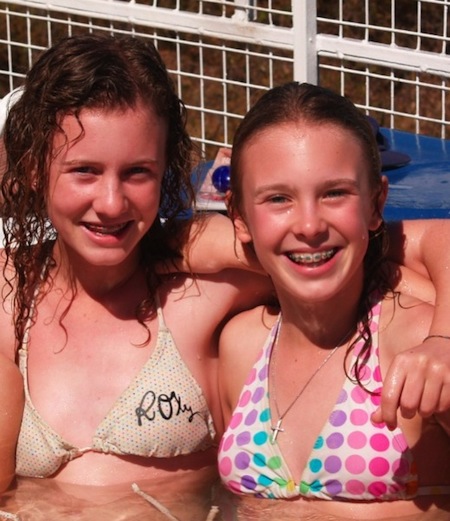Sun safety tips
Need some sun safety tips to improve your love affair with the sun and keep your skin healthy?
How I love being outdoors in the sunshine! And I am also aware of how many people out there - young and old, male and female, across all cultures - just love the warming feel-good, uplifting experience of embracing the sun.
As with all good things in life, too much of a good thing can be a bad thing, and so some of these tips here may just help keep it great!
Over exposure for your skin type to the sun's rays are seen in the following:
- Pre-cancerous (actinic keratosis) and cancerous ( basal cell carcinoma, squamous cell carcinoma, and melanoma skin lesions. The Squamous Cell Carcinoma and the Basel Cell Carcinoma are the more common types of skin cancer, but a melanoma is the one most dreaded as the potential for death is high.
- Fine and coarse wrinkles. Too much sun for your skin type typically results in the fibres in the skin, called elastin, breaking down so that the skin sags and no longer bounces back into place.
- Freckles - from a young age onwards - while sun damage to the skin may not be apparent when you're young, it will definitely show later in life.
- Discolored areas of the skin, called mottled pigmentation, or age spots on the arms, backs, legs and faces
- A yellow discolouration of the skin, in patches
- Bruising (the dilation of small blood vessels under the skin), and tearing more readily, that both take noticeably longer and longer to heal
Whatever your age, the younger the better, your skin will appreciate your paying attention to these sun safety tips, even when you are moving into your twilight years!
Sun safety tip 1: Avoid over-exposure
Over exposure to the sun's harmful rays can result in sunburns which increase your risk of developing skin cancer. It helps to check your local UV Index which will provide important information to help you plan your outdoor activities in ways that prevent overexposure to the sun. For example, you can access the UV Index Forecast, issued each afternoon by the National Weather Service and EPA.
Sun safety tip 2: Manage the hottest hours of the day
The 'logical' solution is to avoid the sun altogether and seek the shade, cover up if in the sun, etc. However, that would mean you miss out on the glorious benefits of the sun's rays. The main one being Vitamin D. The best possible time to allow your skin to synthesise the sun's UVB rays into this marvellous vitamin (or hormone actually), is during the hottest time of the day - when the sun is most directly overhead in the sky. Only 10 - 20 minutes of unprotected exposure is required though. No More! Or certainly not enough to cause any sunburn.
Outside of this, try and seek the shade whenever possible. Listen to your skin. The sun's UV rays are strongest between 10 a.m. and 4 p.m. so remember the shadow rule when in the sun: If your shadow is short it's time to abort and seek the shade! However, also know that the sun's UVA rays are very active at any time of the day. and do NOT create Vitamin D.
Sun safety tip 3: Protection all year round
Sunburn doesn't only happen during the summer. UV rays bounce off sand, snow, concrete, and water, thereby increasing your chance of sunburn. This means that during the summer months you need to be extra aware of the effect of the sun's rays increasing in these circumstances, but that even during winter months it may be necessary to protect yourself.

So, remember to block the sun, not the fun!
Sun safety tip 4: Be sunscreen wise
There are just 3 basics to understand where sunscreens are concerned:
- Choose well. A sunscreen with "broad spectrum" protection, which means that it provides protection against both UVB and UVA rays is paramount. But optimally choose one that has high UVA protection and an SPF not greater than 40. The best choice are those using zinc oxide and NO chemical sunscreen ingredients.
- Apply efficiently. Sunscreens need to be applied liberally and evenly over all exposed areas, (including neck, ears and lips!) For people with thin or thinning hair, apply sunscreen to the scalp as well.
- Reapply. Especially after swimming, perspiring, and towelling off, but usually every 2 hours
Sun safety tip 5: Avoid sun tanning bed malpractice
If you really must use a tanning bed, make sure you do not get addicted to the tanning bed high that some people are known to get and then completely over-do it.
Make sure also that the tanning bed you use does not work only from UVA rays, or is too strong. To obtain a Vitamin D benefit you need to have UVB rays and then make sure NEVER to get your skin burnt.
Sun safety tip 6: Use a hat and quality sunglasses
Wearing a wide-brimmed hat will be appreciated by your face at any age, but most definitely when older!
Sunglasses can deceive you through colour or cost. The ability to block UV light is not dependent on the darkness of the lens or the price tag. While both plastic and glass lenses absorb some UV light, UV absorption is improved by adding certain chemicals to the lens material during manufacture or by applying special lens coatings.
It helps to choose sunglasses labeled as blocking 99-100% of the UV rays. Note that some labels will have "UV absorption up to 400nm." This is in effect the same as 100% UV absorption.
Sun safety tip 7: Be an example to your children
Many people claim that 80 % of a person's lifetime sun exposure is acquired before age 18. I believe this varies considerably depending on where you live as some countries allow for an optimum outdoor lifestyle. However, as a parent, being a good role model with habitual skin health habits for yourself and your child will provide huge value to last them all of their life.
Children need extra protection from the sun with their relatively unweathered skin. One or two blistering sunburns before the age of 18 dramatically increases the risk of skin cancer. Encourage children to play in the shade in the heat of the day, wear protective clothing when necessary and apply sunscreen as a regular habit.
Keep very young children (up to 6 months) out of the sun completely. If required, use a sunscreen with an SPF 30 or 40, but make sure there is the highest possible UVA protection as well. Zinc oxide based sunscreens are definitely the best choice for children of all ages.

Sun safety tip 8: Be clothing-wise
For optimal covering when required, the following tips apply:
- Wear wide-brimmed hats, long sleeved shirts, socks and pants
- Wear a hat with a 4-inch brim all around because it protects areas often exposed to the sun, such as the neck, ears, eyes, forehead, nose, and scalp.
- Wear clothing to protect as much skin as possible. Long-sleeved shirts, long pants, or long skirts are the most protective.
- Wear dark colours as they provide more protection than lighter colours as they prevent greater number of UV rays from reaching your skin.
- Similarly, tightly woven fabric provides greater protection than loosely woven fabric.
- If outdoors quite a lot, perhaps you'd like to look into the sunscreen clothing available?
Sun safety tip 9: Be aware of some sunscreen limitations
Insect Repellants can reduce a sunscreen's SPF by up to one third of it's protection capabilities. best possible choice is to use an insect replant and a separate sunscreen rather than a combination of the 2. Also, make sure not to choose a DEET based insect repellant as it is known to be toxic.
Some medications, especially antibiotics, can increase your skin's sensitivity to the sun. Please ask your doctor or pharmacist for more information about the medications you are taking just to be sure. I have come across a number of people getting sunburnt due to this factor.
Sun safety tip 10: Examine your skin regularly
Perhaps one of the most important habits to learn - perform skin self-examinations regularly to become familiar with any existing moles or growths and more importantly, notice any changes in colour or size or any new growths
References:
American Cancer Society




New! Comments
Have your say... please leave me a comment in the box below.